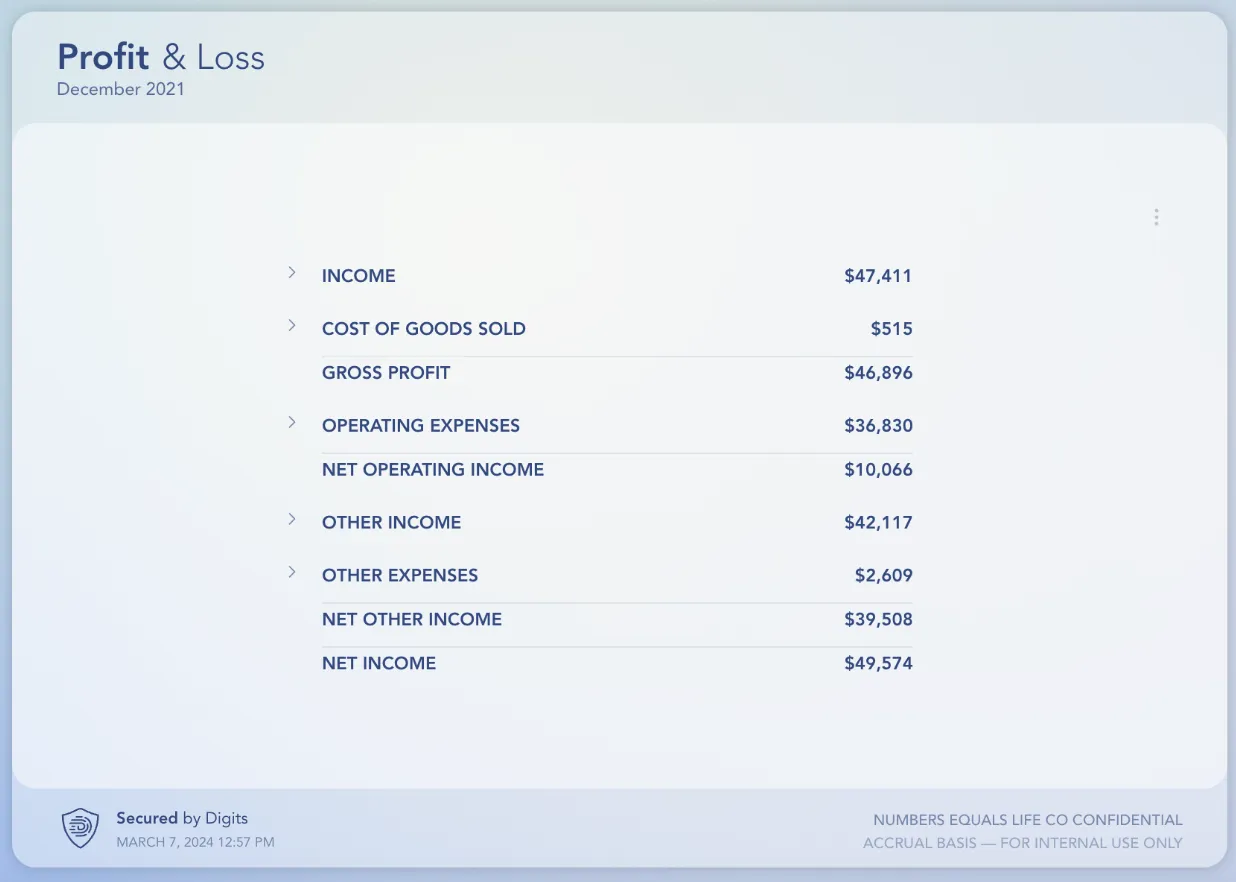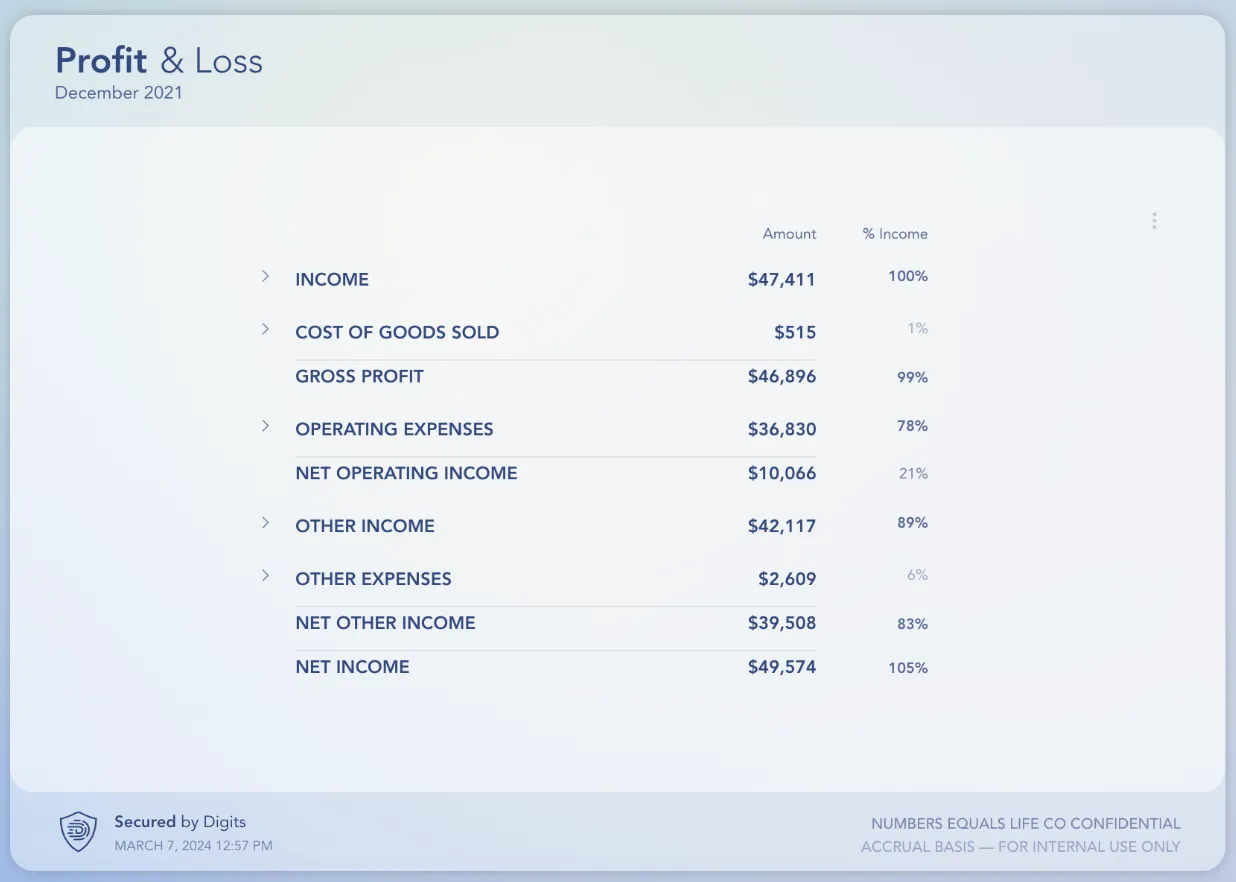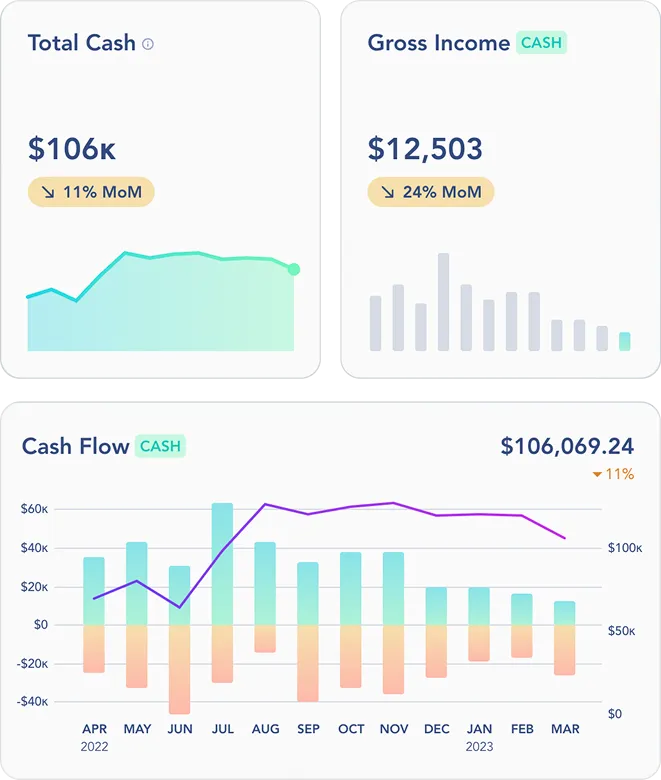
Unpacking the Income Statement: A Beginner’s Guide for Start-ups
 Team Digits
Team Digits
An income statement, often referred to as a Profit & Loss (P&L) statement, is a financial report that shows your business profitability over a specified period. It presents your revenue and deducts your expenses and losses, shedding light on your company's financial health.
Right from small-scale ventures to multinationals, a profit and loss statement is a staple of financial accounting, with integral importance comparable to the balance sheet and the cash flow statement.
Start-ups like yours often begin to tackle P&Ls when they're ready to impress banks, investors, and stakeholders with their financial viability, and awareness.
Let's take a closer look at a profit and loss statement:

Starting from the top and working our way down, let's dig into what each of these figures and categories mean.
1. Revenue (can also be called Income):
Your total sales figures, regardless of whether you use cash or accrual accounting. This is the total money coming into your business during the period that the P&L covers.
2. Cost of Goods Sold (COGS):
This is the total cost to make or deliver the products or services that your business sells. Direct costs such as raw materials and direct labor are included here. Indirect costs like rent or utilities are counted elsewhere (see Operating Expenses below).
3. Gross profit:
The difference between your revenue and COGS. This number shows your profitability after factoring in direct costs but before accounting for overheads.
4. Operating Expenses:
These are costs that aren't directly tied to production, like rent, bank service charges, office supplies, and advertising expenses. These costs are necessary to keep your business up and running.
5. Net Operating Income:
Subtract all the operating expenses from the gross profit, and this is what you get. It depicts the business profitability from core business activities.
6. Other Income:
Any earnings made beyond the usual business operations like interest earned.
7. Other Expenses:
Extra costs outside regular business expenses, such as interest expenses and taxes, including the share for Uncle Sam.
8. Net Other Income:
This is the total Additional Income minus Other Expenses.
9. Net Profit:
The absolute bottom line, it signifies the total profitability of your business after imposing all expenses on the revenue, including taxes.
To better understand your financials and unearth essential insights, your start-up doesn't need an expensive accounting apparatus or a finance degree. You can generate an intuitive P&L statements with easy-to-understand insights using Digits, which can expedite becoming financially savvy about your business.
Common Size Income Statement
There's also the common size income statement, including percentage data for each line and calculating it as a percentage of the total revenue. This method provides insightful comparisons and can help spot trending changes in your business. For instance, if your operating earnings increase from 40% to 44%, it indicates a tangible, positive business progression.

Depreciation
Lastly, depreciation plays a vital role in profit & loss statements. This process involves slowly deducting the total cost of a large business purchase over time, helping you manage your finances. Depreciation’s application in the statement depends on the purpose of the asset - it falls under COGS if it's a production asset or under general expenses for non-production assets.
Different Than a Balance Sheet
One common confusion, especially in start-ups, is the difference between a profit & loss statement and a balance sheet. The balance sheet is a snapshot of what your business owns (assets), owes (liabilities), and the remaining balance (equity) at a specific moment. In contrast, a profit & loss statement illustrates the financial activities and profitability over a specific period, like a month, quarter, or year.
Conclusion
Understanding, and analyzing a P&L is critical. It's much more than a mere financial obligation; it's a window into your business's financial health, guiding informed decisions and strategies in your start-up journey.
The good news is that you don't have to do that all by yourself. Try Digits and we can help you create, visualize and deeply understand your profit and loss statements.


